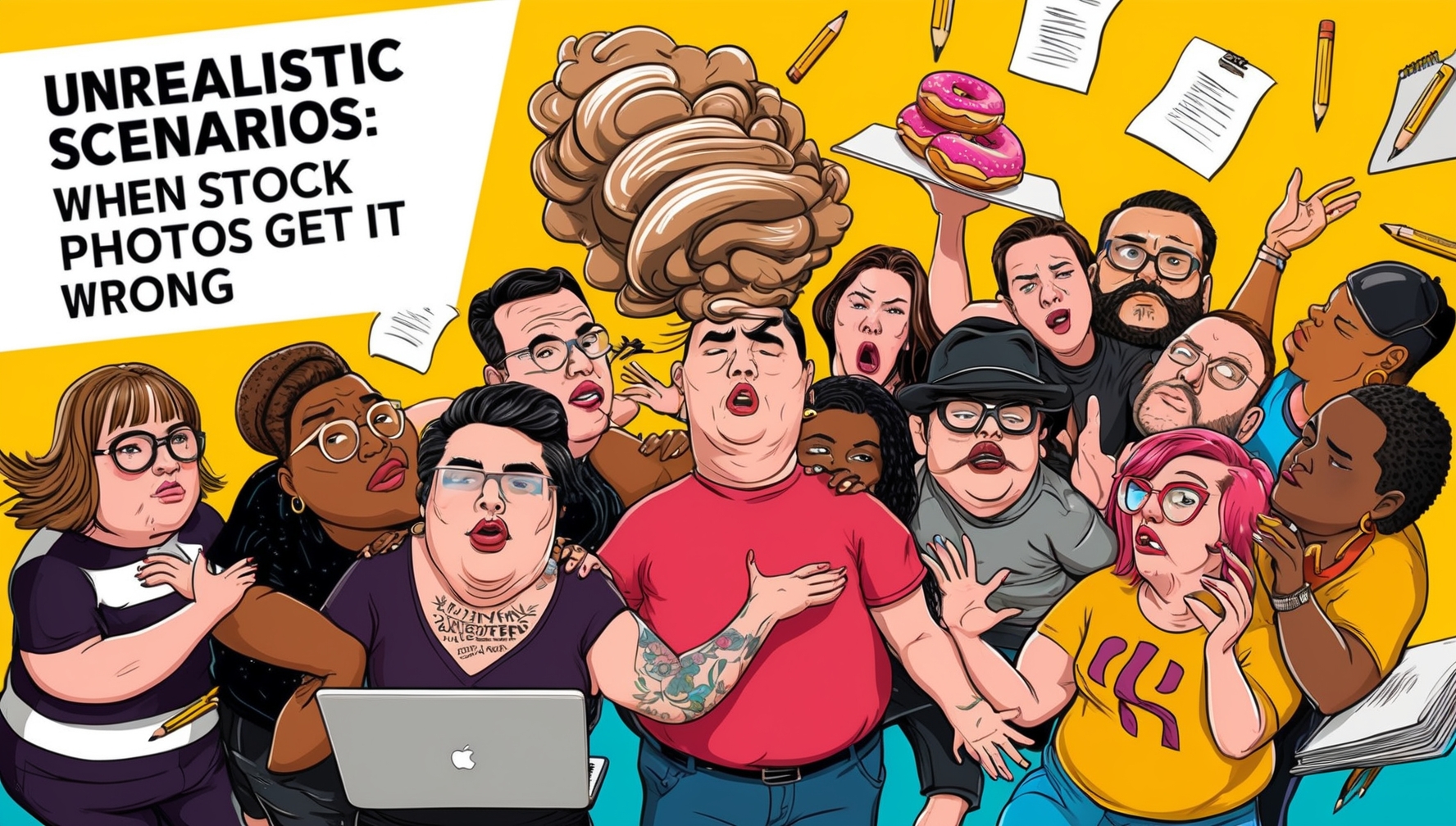Stock photos are a convenient resource for enhancing visual content across various platforms. However, unrealistic or poorly executed scenarios in stock images can undermine the effectiveness of your message and detract from the credibility of your project. Here’s a guide to identifying and avoiding unrealistic scenarios in stock photos.
1. Overly Staged Settings
Issue: Stock photos often feature overly staged settings that feel artificial and lack authenticity. Examples include perfectly arranged office desks or overly immaculate home interiors.
Impact: Such images can make your content seem insincere and unrelatable, as they do not accurately represent real-life scenarios.
Solution: Look for stock photos that depict more natural and realistic environments, and avoid composition errors in stock photos that can further detract from authenticity.
2. Clichéd Poses and Expressions
Issue: Stock photos frequently feature clichéd poses, expressions, and overly staged stock photos, such as people in business attire giving awkward thumbs-ups or overly enthusiastic high-fives.
Impact: These clichés can make your content appear dated and unoriginal, potentially reducing its impact and engagement.
Solution: Choose images with natural, relaxed poses and genuine expressions. Authenticity in how people interact can enhance the relatability of your visuals.
3. Unrealistic Scenarios
Issue: Some stock images depict scenarios that are highly unrealistic or improbable, such as a single person working in an empty conference room or a person miraculously balancing multiple tasks with ease.
Impact: Unrealistic scenarios can lead to skepticism or confusion among viewers, undermining the credibility of your content.
Solution: Select images that reflect plausible and practical scenarios. Ensure that the depicted situations align with real-world expectations and contexts.
4. Diverse Representation vs. Tokenism
Issue: While diversity in stock photos is important, some images may use tokenistic representations that lack depth or fail to reflect genuine diversity.
Impact: Tokenism can come across as superficial and may not effectively represent the diversity of your audience.
Solution: Choose images that reflect authentic and respectful diversity. Look for scenarios where diverse individuals are depicted in meaningful roles and contexts.
5. Inconsistent Context
Issue: Stock photos sometimes include misleading stock photo contexts or elements that are inconsistent with the intended message, such as a summer-themed image used for a winter event.
Impact: Inconsistent context can confuse viewers and detract from the overall message or theme of your content.
Solution: Ensure that the stock images you choose match the context and theme of your project. Align the imagery with the specific message or seasonal relevance.
6. Inaccurate Depictions of Professional Settings
Issue: Stock images may depict professional settings in an unrealistic manner, such as an office where every employee is smiling and working in perfect harmony.
Impact: This can create an idealized and unrealistic view of the workplace, potentially affecting how your content is perceived.
Solution: Opt for images that represent realistic workplace environments, including a range of activities and interactions that accurately reflect professional life.
7. Overly Perfect Product Shots
Issue: Product images that appear too perfect or idealized can sometimes misrepresent the actual appearance or functionality of the product.
Impact: This can lead to disappointed customers if the product does not meet their expectations, affecting trust and satisfaction.
Solution: Use product images that offer a realistic view of the item, including accurate details and potential imperfections. Authenticity helps set appropriate expectations.
8. Lack of Cultural Sensitivity
Issue: Some stock photos may lack cultural sensitivity or misrepresent certain cultural practices or norms.
Impact: This can lead to cultural insensitivity or misunderstanding, potentially offending or alienating certain audience groups.
Solution: Choose images that demonstrate cultural awareness and respect. Ensure that the imagery aligns with the cultural context of your audience.
9. Absence of Realistic Interactions
Issue: Stock photos may show people interacting in unrealistic ways, such as a group of people laughing together in a serious business meeting.
Impact: Such images can create a disconnect with viewers who do not recognize the depicted interactions as realistic.
Solution: Select images with interactions that reflect genuine and realistic behavior. This enhances the relatability and authenticity of your content.
10. Generic and Uninspired Visuals
Issue: Many stock photos feature generic and uninspired visuals that lack originality and fail to stand out.
Impact: Generic images can make your content blend in with others and reduce its effectiveness in capturing attention.
Solution: Opt for stock photos that offer unique perspectives and creative elements. Look for images that are distinct and memorable to enhance the impact of your project.
Conclusion
Avoiding unrealistic scenarios in stock photos is key to creating authentic and engaging content. By selecting images that reflect realistic settings, genuine interactions, and cultural sensitivity, you can enhance the credibility and effectiveness of your visuals. Paying attention to these common issues will help ensure that your stock images support rather than detract from your message.
